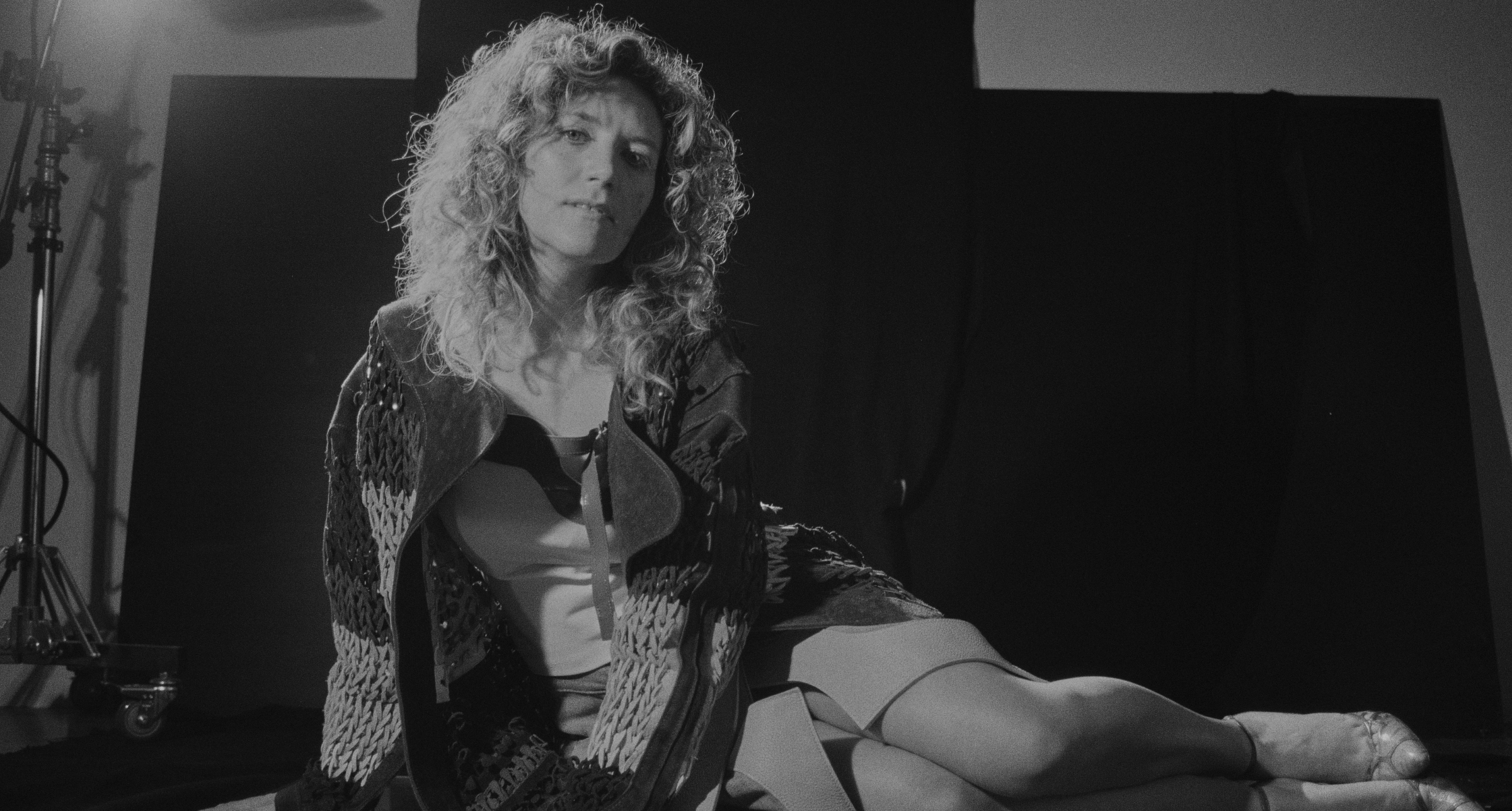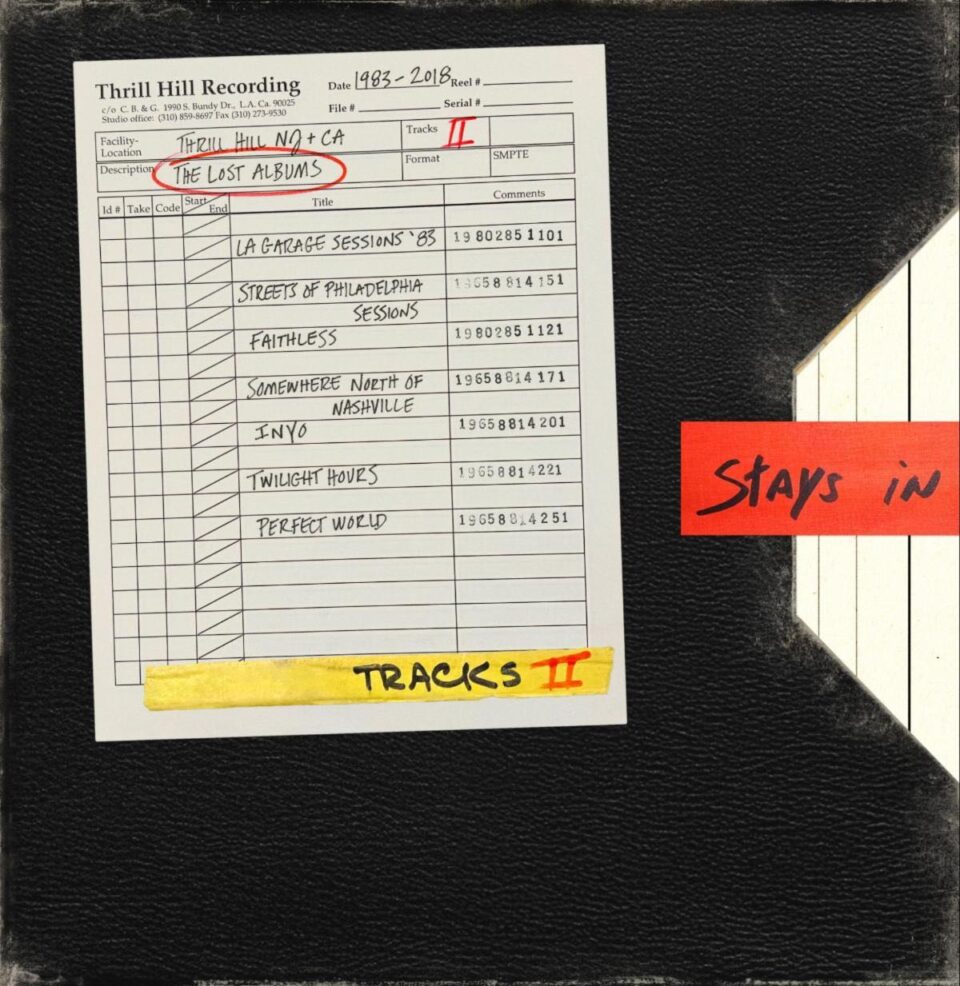Back in August, No Joy released one of the most interesting record’s of 2020 with Motherhood, an incredibly diverse album that managed to feel cohesive only in the sense that each of the tracks—pulling from trip-hop to speed metal in the first five minutes alone—shared a dreamy sense of bliss. As the record’s title implied, the band’s more traditional dream pop sound was upended by the birth of Jasamine White-Gluz’s daughter, a fact reflected more explicitly in the lullaby charm of much of the record (and even more explicitly in the slap-bass-and-baby-giggle interlude “Four”).
Since August, White-Gluz has kept her Bandcamp fresh with Motherhood demos and, thanks to an eager fanbase, a 311 cover. Now she’s returning with another type of Motherhood alt-version, and, coincidentally, another Little Nicky–core cover: The Can My Daughter See Me From Heaven EP takes a few of the album’s tracks and further distorts them from their dream-pop roots with the help of co-producer Tara McLeod and a small orchestra featuring harp (that’s Nailah Hunter), cello, French horn, and even some operatic vocals. Also, a cover of Deftones’ “Teenager.” While the harp gives most of the EP a new sense of weightlessness, final track “Dream Rats (From Heaven)”—that’s the speed metal one from the original LP—proves to be one of the band’s most distortion-heavy tracks to date.
To walk us through Heaven, as she did with Motherhood, White-Gluz broke the EP down track by track, along with co-producer McLeod. Read on for their words, and stream the EP, which officially drops today via Joyful Noise, below.
JWG: We recorded the EP entirely in remote; I would receive takes from the other players intermittently as they tracked at home. As the tracks came in, I’d use them as building blocks to try and envision the final arrangements. Even though they didn’t track together, Tara created these lap steel swirls and Ouri had these cello sounds that somehow combined perfectly to create these bittersweet tones.
My favorite way to imagine the songs was to listen to each take while taking a long walk. Like everyone else during the pandemic, I craved nature and being outside. I was walking throughout the deeeeep Canadian winter, where it was all ice and darkness. The music really hits a certain way when you’re walking around huge icicles and blistering wind. “Kidder (From Heaven)” in particular felt really tragic on those walks, just really somber. As the tracks continued to come in and spring started to thaw, I continued going for walks but started to hear different things. It reads incredibly cheesy when I say this now, but as snow started to melt and birds started to reappear, I really did start hearing the optimism in the song. So for me this song has lightness and darkness and happiness and sadness, just as it did on the original.
2. “Fish (From Heaven)”
JWG: I was actually worried this song would lose its magic once the guitars were taken out. One of my favorite parts in the original is the contrast between the verses that are filled with vibraphones and piano and the choruses that are chugging with gnarly industrial guitar. Now, though, I can’t decide which version I like better. Ouri created these cello squalls that are so eerie, and we looped an operatic vocal from Brandi [Sidoryk] that is one of my favorite moments on the EP.
TM: I don’t know what to say here other than classical rolls!
3. “Four (From Heaven)”
JWG: This one was one song that I was hesitant to touch because the Motherhood version came together in such an unplanned, spontaneous way. It felt impossible to compete with that. So I decided the best approach was to not. I wanted the song sections to be less dramatic than the original. I see this song as the soundtrack to your walk through some magical cartoon wonderland. Every time you enter a new door it reveals a new world, and there’s a new sound that appears in the song to signify it.
One obvious question was how we were going to find a substitute for slap bass. It is so present on the original “Four.” Ouri filled in that bass line with such perfection. The cello reminds me of, like, Randy Newman or some classic ’80s romantic comedy soundtrack. I love it so much. It helps tie together all the absurdity in the song. My partner heard me arranging the song one day and asked, “Is that the theme to Pinocchio or something?”
TM: We wanted to keep the original overall vibe of this song while capturing it in a new light. The electric guitars were to be detuned to get the falling apart feeling at the end of the track.
JWG: Yes! I love that riff at the end so much. It just pushes the song right off the cliff.
4. “Teenager (From Heaven)”
JWG: This was always one of my favorite Deftones songs. It always stood out to me as such a bold statement to put a mostly electronic/quiet sounding song in the middle of a heavy album. The melodic loop is so sweet and tragic sounding, and when Nailah [Hunter] played it I instantly got chills. I love that we kept a lot of the clicks from pedals being turned on and off, my sighs trying to catch my breath while singing. Those small things help the song feel really intimate and almost live.
TM: I also had just received news that my cat, who’s seen me through the ups and downs of the past 14 years, was terminally ill. It was a very emotional time and I used this EP as an outlet for the hurt and love that I was feeling. The approach for this was through my lap steel guitar—a slide can convey an enhanced deepness. This song was initially to be done with just vocals and harp. Ouri and I both loved the song and were inspired to try out some cello and guitar initially just to play around.
5. “Dream Rats (From Heaven)”
JWG: I always pictured this song becoming something more droney live. We didn’t really have a chance to play around with the live arrangement in any tour settings this year. When I hear this recording I have to remind myself we weren’t in the same room together. Sarah’s drums are so tight and incredible. When Brandi mentioned she played French horn, we knew we had to have it very present on this track, it’s just so demonic and eerie-sounding. I love that all the elements that are introduced throughout the first half of the album feel light or floaty in some ways, and then they all come crashing down on this one; the opera, the cello…it’s heavy as hell.
TM: The approach was to make it as aggressive as possible. We wanted a live in-studio vibe on this one even though we had to record this separately. To get the aggressive feeling I listened to black metal all day and then at night I recorded the guitar parts standing up as though we were all doing a live off the floor take in studio.
JWG: I also love the confusion this track causes. The whole EP is one kind of journey, and then the last track is like the length of all the other songs combined and heavier than any other No Joy song ever. I love unpredictability like that.









